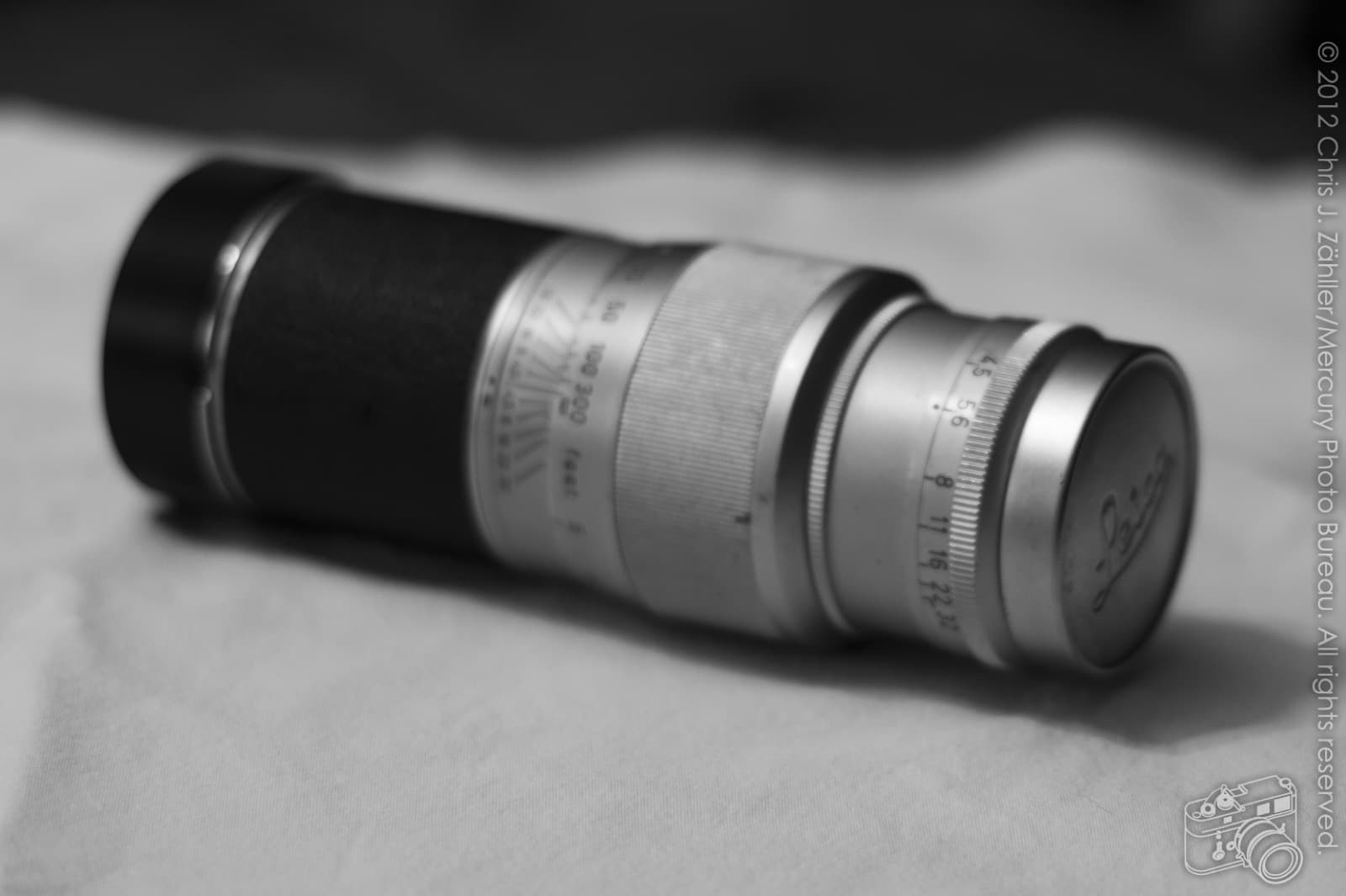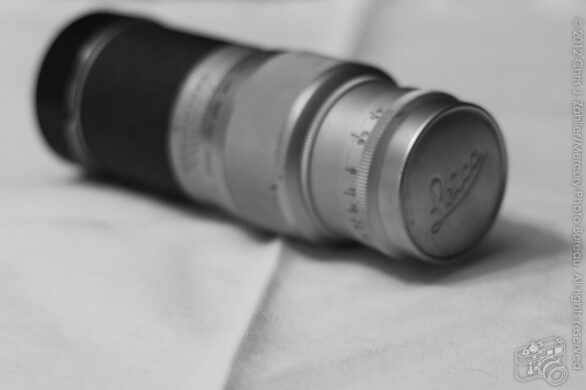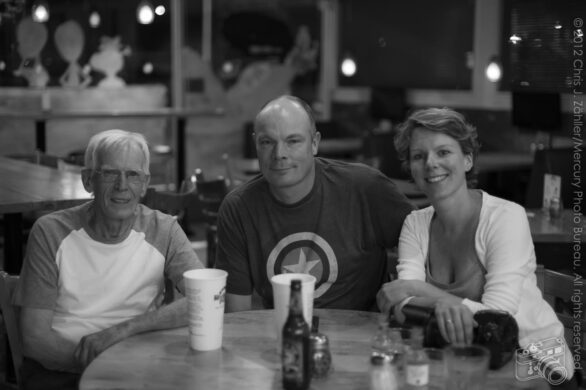
How I Learned to Stop Worrying and Love the Circle of Confusion (Pt. 3)
This is part 3 of 4. If you haven’t read the previous parts, you should probably go back to the beginning.
Research
I spent the next couple of months obsessively researching Leica cameras and lenses. I began by downloading the owner’s manual for the M3 rangefinder. Then I practiced composing and focusing with no film in the camera.
I quickly realized that the lens that Joe had given me was impractical: the frame lines were too restrictive, and, even with the M3 viewfinder’s high magnification, [Sidenote: The M3 viewfinder’s magnification is .91×. Compare that to today’s M9, with its .58× viewfinder.] it was simply too hard to focus accurately. It was also big (5.019″) and heavy (just shy of 1 lb./0.45 kg.)
Later research revealed that the lens, a Hektor 135mm ƒ/4.5 M manufactured ca. 1955, is the least loved lens Leica ever produced.
Leica has an almost 100-year history of making many of the world’s very finest photographic lenses. [The Hektor 135mm ƒ/4.5] isn’t one of them.

After a little poking about the dusty corners of the internet, I found Ken Rockwell’s blog. Of particular interest is the section on Leica lenses. These are thorough, detailed, occasionally-biased-but-always-backed-by-measurable-evidence reviews, and required reading for anyone considering shooting with a Leica (or any other rangefinder, for that matter). Also useful were Steve Huff’s reviews and this page at CameraQuest.
My first instinct was to go cheap and buy Voigtländer (sometimes called Cosina, after the brand’s owner, or abbreviated as CV). Ken quickly changed my mind. But I couldn’t afford the Leica glass, either, especially since the price of used Leica lenses began to inflate after the introduction of the M8 (Leica’s first digital rangefinder) in . Fortunately, Cosina manufactures lenses under the Zeiss brand name that are comparable in quality to Leica but at prices similar to Voigtländer. More on that later.

I spent a lot of time adding Leica and Zeiss lenses to my eBay watch list after that, thinking I’d buy a couple of lenses, and that would be that. But it was not to be. Remember the Dutchman and his crazy digital Leica? I still lusted for the M9, but the price was pretty scary. Then I stumbled on Thorsten Overgaard’s blog.
Thorsten is a Danish writer and photojournalist who wrote extensively on his experience with the Leica M9 when it was released in 2009. He was one of the first professionals to use it, obtaining his camera a mere two days after its official release.
I’ve always been one of those people who have to have the very best, and, as you’d expect, I’m rarely happy very long with my personal possessions — something about green grass and fences. So I would be taking an expensive risk if I bought the camera and became disenchanted with it. Thorsten’s review convinced me to take that risk.
I read his entire, multi-page essay [Sidenote: The essay continues to grow as Overgaard adds to it whenever Leica releases a new model of their flagship digital rangefinder. the essay comprises a whopping forty-four pages.] on the camera, with particular interest in:
- The camera’s menu & recommended settings
- Deployment (set white balance, set lens wide-open, set aperture priority, shoot only ISO 160 or ISO 800 most of the time)
- Adobe Lightroom workflow
These particular sections of the essay convinced me that the M9 is actually a pretty simple camera to use, unlike most DSLRs and even many point-and-shoots on the market, and that made it easier for me to rationalize the purchase. The overall essay is insightful & persuasive, so if you’re on the fence, go read it now.